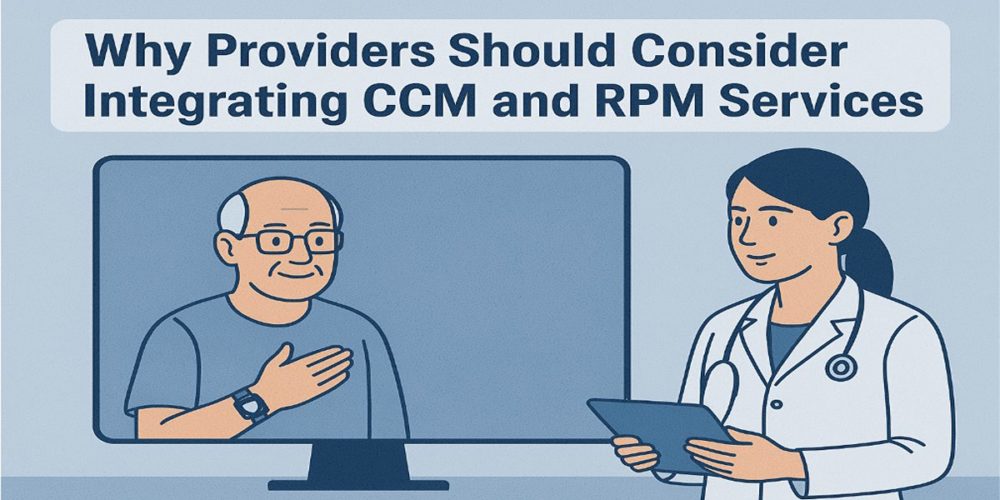The landscape of healthcare is continually evolving, and the latest changes from the Centers for Medicare & Medicaid Services (CMS) are creating unprecedented opportunities for providers focused on remote patient monitoring (RPM) and chronic care management (CCM). ProactiveWellness Care, recently hosted a pivotal webinar with expert Rob Sanchez to break down the 2026 Medicare Final Rule and what it means for your practice.
Why RPM and CCM Are Essential for the Future of Care
The shift toward remote care isn’t a trend; it’s a foundation. Since 2018, CMS has been progressively expanding coverage for connected care services, with a core focus on improving patient outcomes and reducing costly hospitalizations. The 2026 Final Rule is the next major step, transforming these services into a core component of chronic care.
💡 Key Updates from the 2026 Medicare Final Rule
The new rule introduces significant changes that enhance flexibility and financial sustainability for providers.
1. New CPT Codes and Reimbursement Parity
CMS has added two new CPT codes for RPM, expanding the billing options:
- CPT 99445: Covers 2–15 days of data monitoring.
- CPT 99470: Covers 10–19 minutes of monitoring time.
Crucially, these new codes for shorter monitoring periods will be reimbursed at the same rate as the existing codes for longer periods. This “reimbursement parity” encourages “right-sized” care plans tailored to patient needs, rather than rigid billing rules.
2. Concurrent Billing and Code Stacking
Providers can now bill for CCM and RPM concurrently in the same month, which was previously restricted. This shift strongly encourages integrated care models, where CMS rewards providers who combine remote monitoring, medication management, and care coordination.
3. Expanded Services and Supervision
- RTM Expansion: Remote Therapeutic Monitoring (RTM) is expanded to include services for medication adherence and behavioral health.
- Virtual Supervision: The rule makes virtual supervision permanent. For “incident-to” billing, the physician now only needs to provide general supervision and does not need to be physically in the office
💰 Maximizing Revenue with Integrated Care Models
The 2026 Final Rule creates new reimbursement opportunities, especially through code stacking.
| Service Layer | CPT Code Example | Monthly Revenue Potential (Per Patient) |
| RPM (Remote Patient Monitoring) | 99453, 99454, 99457/99458 | $55–$60 |
| CCM (Chronic Care Management) | 99490/99439 | $62–$75 |
| Total Potential | Stacked | $120–$135 per patient per month |
By layering these programs, practices can capture revenue for shorter monitoring periods and brief check-ins that were previously uncompensated. This increases recurring revenue per patient and provides a clearer path to financial sustainability for remote care program.
Example Workflow: A 72-year-old patient with hypertension and diabetes is enrolled in both RPM and CCM. The practice can bill for device setup (99453) and daily data transmission (99454), plus monthly staff time for monitoring (99457/99458) and non-face-to-face care coordination (99490/99439).
✅ Staying Compliant and Acting Now
To capitalize on these opportunities, compliance is paramount. Ensure your practice follows these guidelines:
- Documentation: Required documentation includes time spent, device data, and proof of patient engagement.
- Patient Consent: Patient consent must be obtained and properly recorded before initiating services.
- Workflows: Clear workflows are essential to delegate monitoring and engagement to trained staff, use technology for automated tracking, and avoid duplication or audit risk.
CMS continues to emphasize care coordination in payment models. Early implementation of these updated rules not only builds recurring revenue but also fosters stronger patient relationships, leading to higher retention.
If you’re ready to align with MIPS, ACO, and quality incentive goals, Proactive Wellness offers options from Turnkey Enrollment Campaigns to a Physician Partnership Model that manages operations under your NPI.



